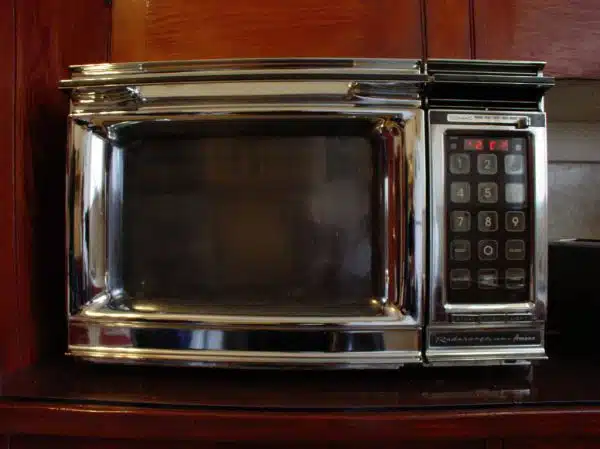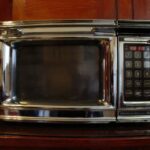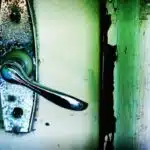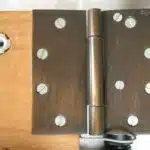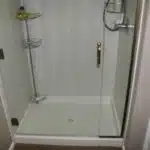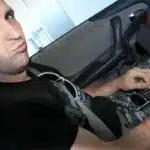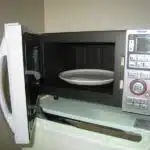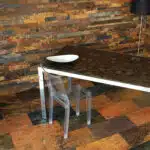As a microwave repair specialist, I have seen countless cases of damaged and malfunctioning microwaves. These appliances are a staple in most households, providing quick and convenient cooking options for busy individuals. However, when they break down or stop working properly, it can be frustrating and disruptive to daily life.
Fortunately, many common microwave issues can be easily repaired with some basic knowledge and tools. In this article, I will guide you through the process of diagnosing and repairing common microwave problems. By following these steps, you can save time and money by fixing your microwave yourself instead of replacing it or hiring a professional. So let’s get started on restoring your trusty microwave to its former glory!
Understanding The Basics Of Microwave Functionality
Microwave ovens have become an essential appliance in modern kitchens due to their efficiency and convenience. These appliances use microwave radiation to heat food quickly and evenly, making them a popular choice for people with busy schedules. However, it is important to understand the basics of microwave functionality before attempting any repairs.
Microwave cooking techniques involve using electromagnetic waves that penetrate food and cause water molecules to vibrate rapidly, generating heat. This process allows food to cook much faster than conventional methods. Unlike traditional ovens, microwaves do not rely on convection or conduction heating mechanisms; instead, they use radiation to cook the food.
Microwave radiation can be dangerous if not handled properly, which is why safety precautions must be taken when repairing a microwave oven. It is essential to ensure that the power supply is disconnected before attempting any repairs. In addition, it is recommended that only trained professionals attempt repairs as they are best equipped with the necessary knowledge and tools required for safe repair work.
Understanding the basics of microwave functionality is crucial when repairing a faulty appliance. Once you have ensured your own safety and disconnected the power supply, you can begin diagnosing common issues that may affect your microwave’s performance.
Diagnosing Common Issues
- Troubleshooting a faulty microwave requires a thorough check of all parts and components, as well as a review of the microwave’s operation manual.
- Common faults in microwaves can be caused by poor maintenance, such as a faulty door switch or an overheated magnetron.
- It is important to identify the exact cause of the fault before attempting to replace any parts, as a misdiagnosis could lead to further damage to the microwave.
- Careful testing of the microwave’s components can help to identify if any parts are faulty and help to determine the best course of action for repair.
Troubleshooting
As microwave repair specialists, we understand the frustration of a malfunctioning appliance. A microwave is an essential kitchen gadget that saves time and effort when preparing meals. When it breaks down, it can be quite unsettling. Diagnosing the issue is the first step in repairing your microwave. In this article, we will discuss troubleshooting techniques to help you identify common problems.
Before attempting any repairs, make sure you have the necessary microwave repair tools. These include a multimeter, screwdriver set, wire stripper, electrical tape, and pliers. The multimeter helps diagnose issues with electrical circuits while the screwdriver set and pliers are used to open up the appliance for inspection. Wire strippers and electrical tape come in handy when dealing with broken wires or connections.
Common microwave problems include failure to heat up food correctly or at all, strange noises during operation, and failure to turn on altogether. Troubleshooting these issues involves checking the power supply, door switches, fuses, and magnetron tube. It’s important to ensure your safety by unplugging the appliance from its power source before carrying out any repairs.
In conclusion, diagnosing common issues with your microwave involves using proper troubleshooting techniques like checking its power supply and internal components such as door switches and fuses. Having the correct microwave repair tools is also crucial for successful repairs. Remember that safety comes first during any DIY repairs; always unplug your appliance before beginning any work on it.
Faulty Parts
In diagnosing common issues with your microwave, it’s important to consider faulty parts that may need to be replaced. These parts can include diodes and capacitors, which are essential components in the microwave’s power supply. Faulty diodes can cause the oven to fail to generate heat or produce strange noises during operation. Troubleshooting faulty capacitors, on the other hand, involves checking for bulges or leaks in the component as these can cause the microwave to stop working altogether.
If you suspect that either of these components is faulty, it’s crucial to replace them immediately. However, before attempting any repairs on your own, it’s best to consult an expert in microwave repair. A specialist can accurately diagnose the issue and provide professional advice on how to fix it. In some cases, replacing a faulty part may not be enough, and a complete overhaul of the appliance may be necessary.
In summary, diagnosing common issues with a microwave involves checking for faulty parts such as diodes and capacitors. Replacing these components requires specialized knowledge and tools; hence it’s best left to professionals in microwave repair. Don’t ignore any strange behavior from your microwave; instead, seek assistance from an expert as soon as possible.
Safety Precautions Before Starting Repairs
After diagnosing the common issues with your microwave, it is important to take necessary safety precautions before starting any repairs. One of the most crucial aspects of microwave repair is proper ventilation. This ensures that any toxic fumes or gases are removed from the area, preventing harm to both you and your loved ones. Always ensure that there is adequate airflow in the room where you will be conducting repairs.
In addition to ventilation, it is also important to wear protective gear when repairing your microwave. This includes gloves and safety goggles to protect your hands and eyes from potential hazards. There may also be a need for a respirator mask if there are toxic chemicals involved during the repair process. Never underestimate the importance of wearing protective gear as it can prevent serious injuries or even save lives.
In summary, before starting any repairs on your microwave, make sure you have taken all necessary safety precautions such as proper ventilation and wearing protective gear. These measures may seem small but can greatly impact your safety and well-being during the repair process. Next, we will discuss the tools you will need to successfully repair your microwave.
Tools You Will Need
Essential tools are necessary to ensure that the repair process is smooth and efficient. When it comes to repairing your microwave, having the right tools can make all the difference in the outcome of your repair. Some of the essential tools you will need include a screwdriver, pliers, wire strippers, and a multimeter.
Safety precautions must be taken before attempting to repair your microwave. The first step is to unplug the appliance from its power source. You should also ensure that you are wearing protective gear such as gloves and safety glasses before proceeding with the repair. Additionally, it is important to read through the manufacturer’s instructions before attempting any repairs.
In summary, having essential tools and taking safety precautions are paramount when it comes to repairing your microwave. With these elements in place, you can proceed with confidence knowing that you have done everything necessary to ensure a successful repair. In the next section, we will discuss how to replace a blown fuse – an important step in getting your microwave up and running again.
How To Replace A Blown Fuse
- The first step in replacing a blown fuse in a microwave is to identify the type and size of the fuse.
- Replacement fuses can be obtained from local hardware stores or online retailers.
- It is important to ensure that the replacement fuse matches the original in terms of type and size.
- The fuse should be removed from the microwave by carefully disconnecting the terminals of the fuse.
- The new fuse should then be connected to the terminals in the same manner.
- Finally, the microwave should be tested to ensure the fuse is functioning correctly.
Identifying The Fuse
When it comes to repairing a blown fuse in your microwave, the first step is identifying the fuse. The fuse is typically located behind the control panel and can be accessed by removing the screws that hold the panel in place. Once you have removed the panel, look for a small, cylindrical object that resembles a light bulb. This is likely the fuse.
To ensure that the fuse is indeed blown, you will need to test its functionality. You can do this by using a multimeter or continuity tester. Set your tool to measure continuity and touch one probe to each end of the fuse. If there is continuity, then the fuse is still intact and functioning properly. If there is no continuity, then the fuse has blown and needs to be replaced.
When identifying and testing the functionality of your microwave’s fuse, it’s important to exercise caution and safety measures to prevent injury. Always disconnect your appliance from its power source before attempting any repairs. It’s also recommended to consult a professional if you are unsure about how to proceed with repairing your microwave’s blown fuse.
Obtaining Replacement Fuse
After identifying and testing a blown fuse in your microwave, the next step is obtaining a replacement fuse. It is important to ensure that you purchase the correct type of fuse for your specific microwave model. Most appliance stores carry fuses for common microwave brands, and they can also be purchased online.
When purchasing a replacement fuse, it is important to note the voltage and amperage ratings of the original fuse. These specifications can typically be found on the blown fuse or in your microwave’s user manual. Using a replacement fuse with different ratings can cause further damage to your appliance or even pose a safety hazard.
Proper installation of the replacement fuse is crucial for ensuring your microwave functions properly and safely. Follow manufacturer instructions carefully when installing the new fuse, and make sure all screws are securely tightened after installation. If you are unsure about how to properly install the new fuse, it is recommended to consult a professional technician for assistance. By taking these steps, you can successfully replace a blown fuse in your microwave and restore its functionality.
Replacing The Fuse
Microwave ovens have become an essential appliance in many households today. However, they can experience problems like any other electronic device, including a blown fuse. Checking the fuse is the first step in identifying and repairing the issue. Testing the fuse continuity with a multimeter can determine if it has blown and needs to be replaced.
Replacing the fuse is a crucial step in restoring your microwave’s functionality safely. It is advisable to purchase a replacement fuse that matches your microwave’s voltage and amperage ratings. Using a different rating may cause further damage or safety hazards. For convenience, these fuses are available at most appliance stores or online.
Proper installation of the replacement fuse should follow manufacturer instructions carefully. After installing the new fuse, it is essential to ensure all screws are securely tightened before turning on your microwave again. If unsure of how to install the new fuse correctly, seek assistance from professional technicians for safety reasons. With these steps, you can successfully replace a blown fuse in your microwave and restore its functionality without causing further harm or posing safety risks.
Repairing A Damaged Door
After replacing the blown fuse, let’s move on to repairing a damaged door. The door of your microwave is one of the most-used components of the appliance, which makes it prone to wear and tear over time. A damaged door can lead to inefficiency in cooking or even pose a safety risk. Imagine trying to heat up your frozen meal only for the door to pop open mid-cycle, leaving you with half-cooked food.
The good news is that repairing a damaged microwave door is not rocket science. Here are some steps you can follow:
- Removing the old handle: In most cases, the handle of your microwave will be attached with screws that hold it in place. Remove these screws using a screwdriver and gently pull off the handle.
- Replacing the handle: Once you’ve removed the old handle, it’s time to replace it with a new one. Align the new handle with the holes left by the old one and secure it using screws.
- Pro tip: If you’re unsure about how to find a replacement handle for your specific model, check your user manual or contact the manufacturer directly.
- Fixing a loose latch: If you notice that your microwave door won’t close properly or keeps popping open during use, this could be due to a loose latch. To fix this issue, tighten any loose screws around the latch area and ensure that it’s correctly aligned.
As microwave repair specialists, we understand how frustrating it can be when your appliance malfunctions. But don’t worry! These simple steps can help restore functionality back into your microwave and save you from having to purchase a new one.
Moving on from fixing a damaged door, our next topic will cover fixing a faulty control panel without breaking a sweat.
Fixing A Faulty Control Panel
To fix a faulty control panel on your microwave, you need to first diagnose the issue. One common problem is unresponsive touchpad buttons. This can be caused by dirt or grease buildup that affects the sensitivity of the buttons. Before attempting any repairs, ensure that your microwave is unplugged to avoid electrical shock.
To start fixing unresponsive touchpad buttons, remove the control panel cover and clean it thoroughly with a soft cloth dipped in warm soapy water. Once cleaned, wipe it dry and reattach it before testing if the buttons are now responsive. If cleaning does not work, you may need to replace any faulty buttons.
Replacing buttons involves removing the old ones and attaching new ones in their place. You can purchase replacement buttons online or from an appliance parts store. To remove old buttons, gently pry them off using a flathead screwdriver. Place the new button in position and snap it into place. Test each button to ensure they are all responsive before reattaching the control panel cover.
To replace a broken turntable motor on your microwave, you will need to follow specific steps that involve disassembling some parts of the microwave carefully. However, before proceeding with this repair, ensure that your microwave is unplugged and avoid touching any electrical components unless you are entirely confident in what you are doing.
Replacing A Broken Turntable Motor
After addressing any issues with the control panel, it’s important to check the turntable motor. If your microwave’s turntable isn’t spinning, this could be due to a faulty motor. Replacing the turntable motor is a relatively simple process that can save you from having to purchase a whole new microwave.
Before replacing the turntable motor, it’s important to troubleshoot any issues you may be experiencing. If your microwave is making strange noises or if the turntable is spinning erratically, this could indicate a problem with the motor. In some cases, simply cleaning the area around the motor can solve these issues. However, if cleaning doesn’t work and you’ve determined that the motor needs to be replaced, it’s time to move on to the next step.
To replace the turntable motor, you’ll need to first purchase a replacement part. Be sure to consult your microwave’s manual or manufacturer website for information on which specific part you’ll need. Once you have the replacement part in hand, carefully remove the old motor and install the new one according to manufacturer instructions. With proper installation and troubleshooting beforehand, your microwave should now be back up and running smoothly.
Moving forward into addressing issues with magnetron requires careful attention and technical knowledge about repairing microwaves.
Addressing Issues With The Magnetron
When addressing issues with the magnetron, it is imperative to prioritize safety. The magnetron is a high-voltage component that emits dangerous levels of radiation when it malfunctions. Before attempting any repairs, make sure to unplug the microwave and discharge the high-voltage capacitor. Wear protective gear such as gloves and goggles and work on a dry, non-conductive surface.
If your microwave still fails to heat up after checking other components like the diode or capacitor, it may be time to replace the magnetron. This can be an involved process that requires partial disassembly of the microwave. As a specialist in this field, I recommend following these steps for a successful magnetron replacement process:
- Order a replacement magnetron that is compatible with your specific brand and model of microwave.
- Remove the outer casing of the microwave and locate the old magnetron.
- Disconnect all wires and mounting bolts from the old magnetron and remove it from its position.
- Install the new magnetron by reversing these steps, being careful not to damage any surrounding components.
Remember to always prioritize safety when working on your microwave. If you are uncertain about any aspect of repairing your appliance, do not hesitate to seek professional assistance.
As we move onto fixing a non-heating microwave, keep in mind that this issue can also be caused by a malfunctioning magnetron. However, there are several other components that could be at fault as well. Let’s explore some potential solutions together.
Fixing A Non-Heating Microwave
- Before attempting to fix a non-heating microwave, it is important to properly diagnose the problem.
- Common causes of a non-heating microwave can include a malfunctioning magnetron, diode, or capacitor.
- Replacing faulty parts is often the best course of action when it comes to microwave repair.
- The necessary parts must be sourced and installed correctly in order to ensure a functioning microwave.
Diagnosing The Problem
As a microwave repair specialist, I understand how frustrating it can be when your microwave stops heating. The good news is that there are common fixes that you can try before calling in a professional. In this article, we will discuss diagnosing the problem to help you determine what may be causing your non-heating microwave.
The first step in diagnosing the problem is to ensure that the power source is working correctly. This may seem obvious, but sometimes microwaves are simply unplugged or have tripped a circuit breaker. If the power source is not the issue, then it may be time to check the door switch. A faulty door switch can prevent your microwave from heating properly and is a relatively easy DIY solution.
If the power source and door switch are both functioning correctly, then it may be time to inspect the magnetron. The magnetron is responsible for generating heat within your microwave and can often be the culprit behind a non-heating appliance. However, this fix should only be attempted by those with experience as it involves working with high voltage components.
Overall, diagnosing the problem of a non-heating microwave requires some basic troubleshooting skills and knowledge of common fixes. By checking the power source, door switch, and magnetron, you can determine what may be causing your appliance to malfunction and take steps towards fixing it yourself or seeking professional assistance if necessary.
Replacing Parts
After diagnosing the problem of a non-heating microwave, it may be necessary to replace certain components. Upgrading components can improve the overall efficiency and lifespan of your appliance, while finding replacements can save you from purchasing a new microwave altogether. As a microwave repair specialist, I highly recommend seeking professional assistance for this task as it involves working with delicate and often high voltage components.
One component that may need replacing is the diode. The diode works together with the magnetron to generate heat within your appliance. If the diode is faulty, it can prevent the magnetron from functioning properly and result in a non-heating microwave. Replacing the diode requires careful attention to detail and knowledge of electrical safety protocols.
Another component that may need upgrading or replacing is the capacitor. The capacitor stores energy that is used by the magnetron to generate heat within your appliance. A faulty capacitor can cause a variety of issues, including a non-heating microwave or even sparking and arcing inside your appliance. Upgrading to a higher quality capacitor or finding an exact replacement can improve performance and prevent further damage to your appliance.
In conclusion, fixing a non-heating microwave often requires some basic troubleshooting skills and knowledge of common fixes such as checking power sources, door switches, and magnetrons. However, if these solutions do not solve the problem, upgrading or replacing components such as diodes and capacitors may be necessary. It is important to exercise caution when working with high voltage components and seek professional assistance when needed. By taking these steps, you can ensure that your appliance runs efficiently for years to come.
How To Replace A Damaged Door Switch
After fixing a non-heating microwave, the next common issue that homeowners encounter is a damaged door switch. A faulty door switch can prevent your microwave from starting or cause it to stop mid-cycle. To determine if this is the problem, you will need to test the continuity of each door switch with a multimeter.
Testing continuity involves verifying that electrical current flows through the switch when it is engaged. First, unplug your microwave and remove the control panel to access the switches. Then, use a multimeter to check for continuity by touching one probe to each end of the switch terminals while pressing and releasing the switch button. If there is no continuity, then that particular door switch needs replacing.
Identifying the correct replacement part for your door switch is essential in ensuring that it functions correctly. There are three types of door switches: primary interlock, secondary interlock, and monitor switches. Each type has different specifications and operates differently in your microwave’s circuitry. Consult your microwave’s manual or search online for your model number to find the correct replacement parts needed for each specific door switch.
Next up in our guide on how to repair your microwave is addressing a faulty high voltage transformer. This component converts low-voltage electricity into high-voltage power used by the magnetron tube to create heat waves that cook food in your microwave oven. If you notice any unusual sounds coming from inside your appliance or if it’s not heating correctly, then this could be an indicator of a failing transformer.
Repairing A Faulty High Voltage Transformer
The high voltage transformer is one of the most critical components in a microwave oven. It converts the low voltage electricity from the power supply to the high voltage required for cooking food. When this component fails, it can cause your microwave to stop working altogether. To determine if your high voltage transformer is faulty, you need to perform a few tests.
One essential test you can perform is using a multimeter to check the continuity of each wire connected to the transformer. If any of these wires are damaged or have become disconnected, they will need replacing. Another test you can carry out is checking the primary and secondary winding resistance with an ohmmeter. A normal reading should be between 0.5 and 2 ohms.
Once you’ve confirmed that your high voltage transformer needs replacing, it’s time to get down to work. Begin by removing the old transformer and safely disposing of it following local regulations on electronic waste disposal. Then, install your new transformer in its place and ensure that all wires are correctly connected before testing again for functionality.
Moving forward from repairing a faulty high voltage transformer, we now move onto troubleshooting a microwave with a sparking interior. This issue may cause concern as it poses potential safety risks when left unaddressed.
Troubleshooting A Microwave With A Sparking Interior
Sparking interiors in microwaves can be a common issue that needs immediate attention. The sparks may result from the buildup of grease, food particles, or other debris inside the microwave. To prevent sparking, you must regularly clean the interior of your microwave to eliminate any potential causes.
To clean the interior of your microwave and prevent sparking, first unplug it from the power source. Remove all removable parts such as turntable trays and support rings. Wash these parts with warm soapy water and set them aside to dry. Next, use a soft cloth or sponge to wipe down the interior of the microwave. You may use a mixture of water and vinegar for stubborn stains. Avoid using abrasive cleaners as they can cause damage to the inner lining of your microwave.
Spark prevention is essential when repairing your microwave since it helps avoid further damage or accidents. Once you have cleaned the interior and removed all sources of debris, reassemble all parts accordingly. Turn on your microwave and run it empty for a few seconds to ensure that there are no more sparks. If you still experience sparking after cleaning your microwave’s interior, contact professional repair services immediately to address any underlying issues that may be causing this problem.
Reassembling Your Microwave After Repairs
- When reassembling a microwave after a repair, the first step is to reattach the door and ensure that all latches and hinges are secured correctly.
- Next, any new parts that were installed should be checked to make sure that they are properly connected and secure.
- Following the installation of new parts, the microwave should be tested thoroughly to check for proper operation and any signs of fault.
- The internal wiring of the microwave should be inspected to make sure all connections are secure and that no wires are damaged.
- The microwave should be tested again to ensure that all of its functions are working correctly and that the repairs were successful.
- Finally, the microwave should be cleaned and any protective covers or guards should be reinstalled before the repair is complete.
Reattaching The Door
When it comes to repairing your microwave, reattaching the door is a crucial step in the reassembly process. This task involves replacing hinges and fixing the latch mechanism to ensure that the door closes securely and operates smoothly. To begin, make sure you have the correct replacement parts for your specific microwave model.
To replace the hinges, remove the screws securing them in place and carefully detach them from the microwave body. Align the new hinges with their respective slots and secure them using screws. Next, examine the latch mechanism to identify any issues or damage that may be present. If there are no visible problems, simply realign and reattach any loose or disconnected components.
Once you have both hinges and latch mechanism properly installed, proceed to attach the door to its corresponding brackets on either side of the microwave body. Ensure that all components are fitted securely before testing out your repaired appliance. By following these steps carefully, you can effectively reattach your microwave door after repairs without any complications or safety concerns.
Installing New Parts
After reattaching the door, the next step in reassembling your microwave after repairs is to install new parts. Sourcing parts can be a challenge, especially if you have an older model or unique brand. It’s important to only use replacement parts that are designed for your specific microwave model, as using incompatible parts can lead to safety hazards and further damage.
When it comes to cost estimation for new parts, it’s best to consult with a professional technician who can provide accurate pricing based on your specific needs. However, in general, replacing common components such as fuses, switches, and buttons can range from $10-$50 each. For more complex repairs such as replacing the magnetron or control board, costs can reach up to $300 or more.
Installing new parts requires careful attention to detail and proper alignment. It’s crucial to follow manufacturer instructions and ensure that all components are fitted securely before testing out your repaired appliance. By entrusting the installation process to a qualified technician and using high-quality replacement parts, you can extend the lifespan of your microwave and enjoy its efficient performance once again.
Testing The Microwave
After installing new parts, the next crucial step in reassembling your microwave after repairs is to test it for safety and functionality. It’s important to remember that microwaves can pose potential hazards if not handled properly, so ensuring that your appliance is working correctly is essential for your safety.
To test the microwave’s functionality, start by performing a basic heating test with a cup of water. Place the cup in the center of the turntable and heat it on high for one minute. If the water heats up properly without any strange noises or smells, then the microwave is functioning correctly. However, if there are any issues during this process, it’s best to consult with a professional technician who can diagnose and fix the problem.
In addition to testing for functionality, it’s also crucial to perform safety checks on your repaired appliance. Inspect all components thoroughly and ensure that they are fitted securely before using your microwave again. By following proper microwave safety protocols and testing techniques, you can enjoy efficient performance from your repaired appliance while minimizing potential hazards.
Maintenance Tips To Keep Your Microwave Running Smoothly
Preventative measures are the best way to ensure that your microwave stays in good working order. One of the most important things you can do is to keep it clean and free from debris. This means wiping down the interior after each use, especially if there are spills or splatters.
In addition to cleaning, it’s also important to use your microwave properly. Avoid running it empty or using metal containers as this can cause damage. Always follow the manufacturer’s instructions for cooking times and power levels, and don’t try to modify them on your own.
Lastly, consider having regular maintenance checkups with a professional technician. They can identify any potential issues before they become major problems and provide valuable advice on how to care for your specific model. By taking these preventative measures, you’ll be able to keep your microwave running smoothly for years to come.
Cleaning techniques are an essential aspect of maintaining a healthy and functional microwave. For starters, make sure that you remove any food debris from the turntable after each use. You should also wipe down the interior walls with a damp cloth or sponge at least once a week.
Another effective cleaning technique is steam cleaning. Simply place a bowl of water in the microwave and let it run for 5-10 minutes on high power. This will loosen any stuck-on food particles, making them easier to wipe away.
By incorporating these cleaning techniques into your routine, you’ll not only keep your microwave looking great but also prolong its lifespan by preventing potential mechanical issues caused by dirt buildup.
Regular upkeep is key when it comes to ensuring that your microwave runs smoothly over time. By implementing preventative measures like proper usage and regular maintenance checkups along with effective cleaning techniques such as steam cleaning or wiping down surfaces after every use – you’ll have a well-functioning appliance for years ahead without any trouble!
Conclusion
In conclusion, repairing a microwave is not as daunting as it may seem. With a basic understanding of its functionality and some essential tools, you can diagnose and repair common issues that may arise. However, safety should always be your top priority when handling electrical appliances.
Remember to switch off the power supply before starting any repairs, and wear protective gear to prevent any mishaps. In addition to fixing problems, regular maintenance is crucial in ensuring your microwave runs smoothly for years. As the saying goes, “an ounce of prevention is worth a pound of cure.”
As microwave repair specialists, we recommend keeping your appliance clean and inspecting it regularly for signs of damage or wear. By following these simple steps, you can avoid costly repairs and extend the lifespan of your microwave. So don’t hesitate to roll up your sleeves and get to work – with a little know-how, you too can become a DIY microwave repair expert!
Image Credits
- “amazing microwave” by jmv (featured)

